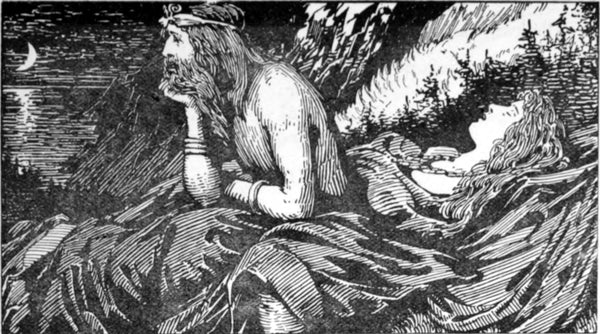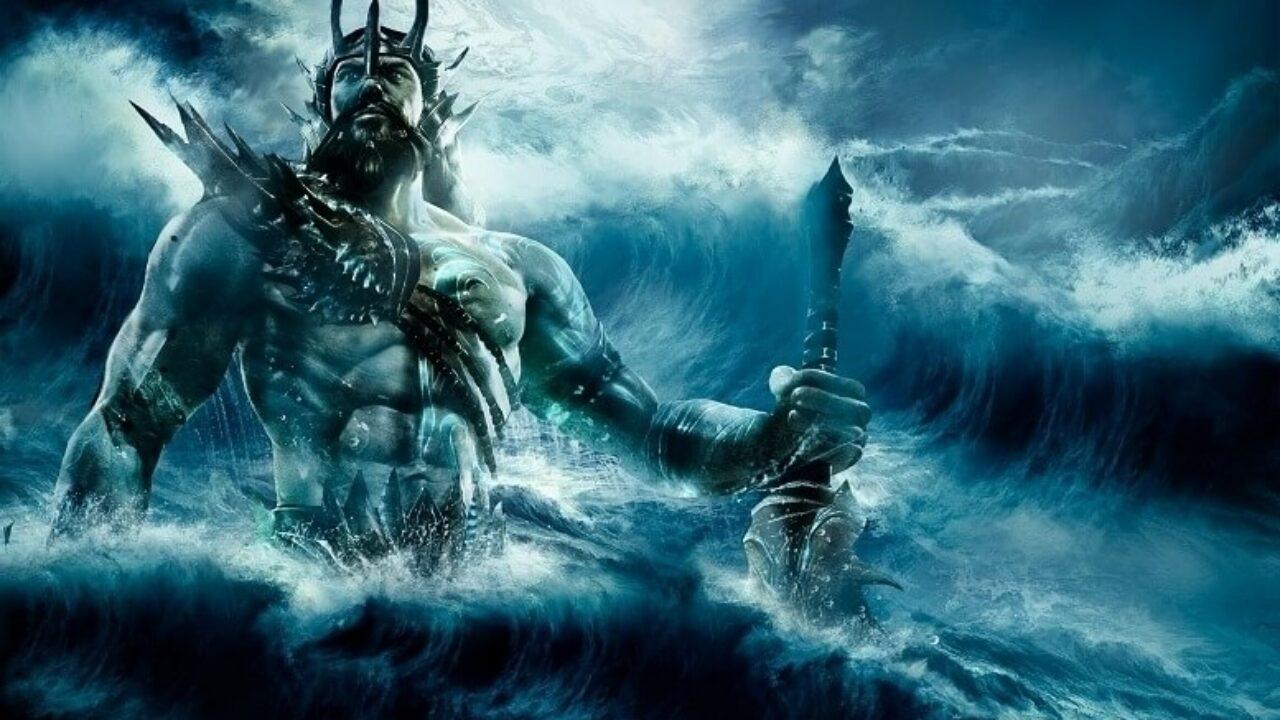Njord (Old Norse Njörðr), the God of the sea, its wealth and bounty, is one of the most important Gods of the Norse pantheon and widely worshiped by all the peoples of the north, seafarers by nature and heart.

This sculpture stands on the southern side of the inland lake in Heiligenhafen, north of Germany
The God of the sea is also a God of wealth, specially since a great deal of wealth for the norse peoples came from the seas, in the form trading, raiding and even fishing. Njord is described as being extremely wealthy and prosperous, able to grant wealth in the form of land and valuables to those who invoke his aid. There is even an old saying from the Viking Age Norway, that claims very wealthy people were “as rich as Njord”.
Njord is one of the major Vanir Gods. After the events of the Aesir-Vanir war (read more here), Njord, his daughter Freyja and son Freyr went to live among the Aesir as hostages. The exchange of hostages after a war was common practice during the Viking era, with the hostages being honored guests. In little time, Njord and his offspring became trusted members of the Asgardian community, and altars to them were often found side by side with altars to Odin and Thor in preeminent temples, such as the one in Uppsala. The Gesta Hammaburgensis ecclesiae pontificum, written by Adam of Bremen between 1073 and 1076 describes the presence of Freyr (called Frikko by him) in the temple of Uppsala:
“In this temple, entirely decked out in gold, the people worship the statues of three Gods in such wise that the mightiest of them, Thor, occupies a throne in the middle of the chamber; Woden and Frikko (Freyr) have places on either side. The significance of these Gods is as follows: Thor, they say, presides over the air, which governs the thunder and lightning, the winds and rains, fair weather and crops. The other, Woden—that is, the Furious—carries on war and imparts to man strength against his enemies. The third is Frikko, who bestows peace and pleasure on mortals. His likeness, too, they fashion with an immense phallus.” (Gesta Hammaburgensis 26, Tschan's translation) (read more about Freyr here)
As the God of the sea, Njord was invoked by the Vikings before setting out on sea voyages, but also in hunting and fishing expeditions. He was believed to have the ability to calm waters and quell fires.

Njord has a twin sister called Nerthus, who was also his wife before he was sent to Asgard. She is the mother of Freyr and Freyja. It is unclear how this first marriage ended, with some sources claiming that Odin annulled the marriage.
Njord was soon to be married again after arriving in Asgard, in one of the few tales about him that survived through the ages:
The tale begins with the giantess Skadi. She is the daughter of the giant Thjazi, who kidnapped Idun from Asgard. Idun was the Goddess responsible for caring for the fruits eaten by the Gods that enabled them to retain their youth and vigor.
As expected, Loki had a part to play in this mischief, assisting Thjazi in kidnaping Idun, only to rescue her some time later. Thjazi chased Loki and ended up dying in flames, in a trap laid by the Aesir (read the full story here).
When Thjazi did not return, his daughter Skadi assumed that he must be dead and swore vengeance. She travelled to Asgard, seeking restitution for the slaying of her father. The Gods, however, convinced her to accept reparations (weregeld) instead of seeking vengeance.

These reparations came in three parts. First, Odin took Thjazi’s eyes and ceremoniously cast them into the night sky, where they became two stars.
Second, the Gods were to make Skadi laugh. After many feats were tried, none succeeded in bringing a smile to the grim face of the giantess. At last, Loki tied one end of a rope to a goat and the other end around his testicles and began a game of tug of war with the goat. Each screeched and howled in turn, until at last Loki fell over into Skadi’s lap. The giantess couldn’t help but chuckle.
For the final reparation, Skadi was offered gold to compensate her for her father’s death, but she refused, saying said that she would only settle for the husband of her choice from among the Gods.
The Gods agreed, on the condition that she chose her husband only by looking at his feet.
She chose the feet that she considered to be most beautiful, assuming them to belong to Balder, son of Odin and the most beautiful of the Norse Gods, but the feet were in fact those of Njord. Skadi was horrified by the realization, as Njord’s face was worn by the sea and he smelled of salt. Regardless, the oath was fulfilled, and Njord married Skadi.
Their union, however, did not last long, as they could not agree on where to live. Njord considered Skadi’s home in Jotunheim too cold and desolate, while Skadi did not like the noise and activity of Njord’s home, a house on the seashore of Asgard called Noatun, which means ship haven.
Each could only tolerate the home of the other for nine nights, and soon after went their separate ways.

According to the Poetic Edda, Njord is one of the few Gods prophesied to survive Ragnarok. It suggests that he will return to the Vanir during the final battle where he will survive.
In his role as a sea God, Njord helps and protect seafarers. Njord is not often mentioned in the surviving literary sources for Norse religion, but he is clearly one of the most venerated of the Norse Gods, having many temples during the Viking era. Nowadays, several locations pay homage to Njord in their name, and is not uncommon to find places and business named after the God.

Njord kayak park in Norway
Sources:
Simek, Rudolf. 2007 (1993). Translated by Angela Hall. Dictionary of Northern Mythology. D.S. Brewer. ISBN 0-85991-513-1
Orchard, Andy. 1997. Dictionary of Norse Myth and Legend. Cassell. ISBN 0-304-34520-2
Jesse Byock (2005) Snorri Sturluson, The Prose Edda. 1st. edition. Penguin Books Ltd. ISBN-13 978-0-140-44755-2
Faulkes, Anthony. Edda. Trans. 1982. Oxford University Press. ISBN-13: 9781389651922
Daniel McCoy. 2016. The Viking Spirit: An Introduction to Norse Mythology and Religion. 1st edition. CreateSpace Independent Publishing Platform. ISBN-13 978-1533393036












